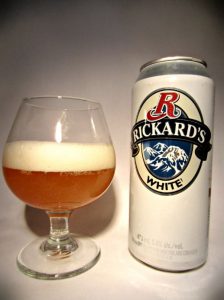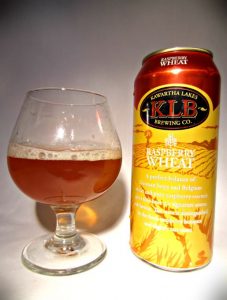Ever dreamed of quitting your day job to launch the newest, coolest craft beer bar or brewery in town?
Not so fast.
With craft beer bars and breweries hotter than the housing market of 2005, competition is getting stiff, which means not even the most polished business plan is enough to guarantee your success.
In these uncertain times, what you need is a silver bullet— No, not a Coors, smart guy, but a magic formula that will ensure financial victory.
Sure, some might tell you that there are no guarantees in business, but those people don’t know Russian hackers. We do. And what we’re about to wikileak to you are the secrets of success that other craft breweries and craft beer bars don’t want you to know.

Using sophisticated spy tools similar to those employed by the CIA, NSA and FBI, our digital comrades scraped private data from the most successful craft breweries and taprooms in the U.S. From there, we sifted through pages of emails, text messages, social media communications, phone transcripts, WhatsApp chat logs and business records.
After the data was scrubbed, a pattern of success emerged.
What you have before you now are the best business secrets compiled from the private records of the most successful craft breweries and beer bars in the U.S. Follow this advice, and we just might be seeing you on the next cover of Rich Person Magazine…
The Basics
1. Food Trucks. Food trucks are vital to the survival of any taproom, probably more so than the quality of the beer on tap. If there are no food trucks available, seek out a food trunk (food sold from the trunk of a car).
2. All IPA Everything. While it’s true that people like variety and trends come and go, there is one thing that will never change: everyone only likes IPA forever. Therefore it’s best to assume that you will alienate everyone and go bankrupt instantly if you don’t either brew IPAs exclusively (or at least have an IPA as your flagship beer) or only have IPAs on your tap list. For taprooms that want to expand, consider setting up an IPA-only bottle shop.
To stay relevant, try mixing things up a bit by throwing an IPA tap takeover in your IPA-only taproom.
3. Pay-to-Play. With new craft breweries opening at a rate of 100 per day, it can be tough for a brewery to get its beer into a bar and even tougher for bars to decide which beer they should put on tap. But it doesn’t have to be that hard— not with pay-to-play!
Let’s explain this concept Mr. Subliminal-style: “Pay-to-Play” is a kind of win-win enhanced business technique [bribery] where a brewery or distributor provides money [$20 per keg to $2,000 per dedicated tap line per year], goods [new tap lines, expensive sports tickets, new TVs, coolers, etc.] or services [maintaining draft lines] to bars in order to build good relationships [get preferential draft placement ideally at the exclusion of other breweries and distributors]. (Legality may vary.)
4. Paid Swag-Vertising. People want to advertise for you for free, so it is critical that you charge them for that privilege. Make a buck and get your brand out there by selling logo-laden hoodies, t-shirts, trucker hats, fanny packs, giant permanent car decals, and DIY face, eyelid and tongue tattoos (talk about word of mouth— ZING)!
Speaking of passive-aggressive advertising techniques, consider offering a one-time 3% discount to people who legally change their name to the name of your brewery of beer bar, and then sue them later for trademark infringement.
Location & Design
1. Difficult-to-Find Industrial Location. This is more of a must for brewery taprooms than craft beer bars, but there is no denying the collateral benefit of your customers finally being able to get a growler filled and pick up a bulk order of printed circuit boards right in the same obscure industrial park!
2. Unfinished Building. Let’s face it: people love the look of raw building materials. So give your customers what they want and save a bunch of money in the process by moving into a half-finished or abandoned dilapidated building! There’s no better time to show off the natural beauty of your building’s exposed brick, cinder block, dry wall, rafters, insulation, plumbing, HVAC ducts, electrical wiring, concrete foundation or whatever other architectural treasures there are hiding behind the scenes!
Remember, it’s not “unfinished”, it’s rustic… or sustainable… or something.
3. DIY Wood & Metalwork-Motif. This one’s more of a brewhouse taproom requirement, but in every case the key is that you or a buddy (whoever has the better beard) build the furniture and bar out of urban-foraged wood or metal.
If you can’t find any scrap metal, discount wood or free-cycled cinder blocks for your re-purposing purposes, then beer-inspired furniture and fixtures are a must including grain-bag chairs, hop-stuffed pillows, over-pressurized tap handle bathroom sink faucets, beer bottle chandlers, beer can telephones and keg toilets.
Business Edge
1. Expensive Artisanal Snacks. Small $5 bags of gourmet popcorn, hand-crafted potato chips, trail mix, or food lumps made from spent grains are just a few examples of expensive artisanal snacks that will put you on the fast-track to success.
2. Crowler Machine. Beer from the can used to be bad because of its association with macro beer and cancer, but now it’s the best. A “Crowler Machine” will allow you to seal beer in a to-go can so that you can tap into the can craze before beer from the can is a bad thing again.
3. Irregular Business Hours. If it’s one thing people hate, it’s predictable business hours. Not only that, it’s a proven fact that people don’t drink beer on Mondays, Tuesdays or Wednesdays, so definitely don’t be open on those days or any other days. But if you do choose to be unnecessarily open for business, remember that most people get their drinking done before 5 pm, which means last call should be no later than 4:45 pm. Also, keep in mind that the most effective business-owners only work a four-hour work week, which means if you’re open more than four hours a week, you’re doing something wrong.
Atmosphere
1. Dogs. It’s a fact that everyone loves dogs, and if they don’t, then they’re worse than Hitler because even Hitler liked dogs. Therefore, the more dogs in your taproom, the better. If no dogs are available, seriously consider investing in a dog simulator machine (it makes loud barking noises and is upgradeable to emit wet dog smell and blow animal hair around the taproom).
2. Hipster “Indie Folk” Behind the Bar. Nothing gives the appearance of anti-capitalist coolness to a for-profit business better than indie folk tending bar, so stock up while supplies last! (Don’t worry, indie employees will appreciate the irony… it’s what they live for.)
3. Games. Few if anyone have ever been seen actually playing these games in taprooms, but it is essential that at least one of the following be on premises at all times: Cards Against Humanity, Ticket to Ride, or Settlers of Catan. Also, if you have an outdoor area, don’t forget that zoning requires that you maintain an operational cornhole set.
Philosophy
1. Local Everything. Local is the new black. So whenever possible and regardless of quality, taprooms need to serve local beers, arrange for live local music, local puppet shows, and free local tax-prep help.
2. Beer Puns. The highest form of comedy has and always will be puns. So hop to it and tap into the wonderful world of beer-inspired puns when naming your beer or craft beer bar! We promise you won’t hear any booze from us!
С первым Апреля! [Happy Businessing!]
[DISCLAIMER: By no means do any of the tips in this article represent legal or business advice. In fact, many of the tips in this post are completely stupid, satirical and written by an asshole who is trying to get fired to collect unemployment benefits. We don’t know Russian hackers. We don’t recommend that anybody does anything illegal ever. And we whole-heartedly apologize to any and everyone who is even slightly offended by anything written herein. We will be sending ourselves to sensitivity training to try to understand what went wrong in our childhood that makes us totally not responsible for any of our behavior in life. Thank you.]
Entertained? Well, thanks- you’re far too kind.
Tweet-worthy? That would be rather chill of you:
Want to read more beer inspired thoughts? Come back any time, friend us on Facebook, or follow us on Twitter:
Hi, I’m D.J. Pander. I like beer. I also blog. Follow me on MySpace.












